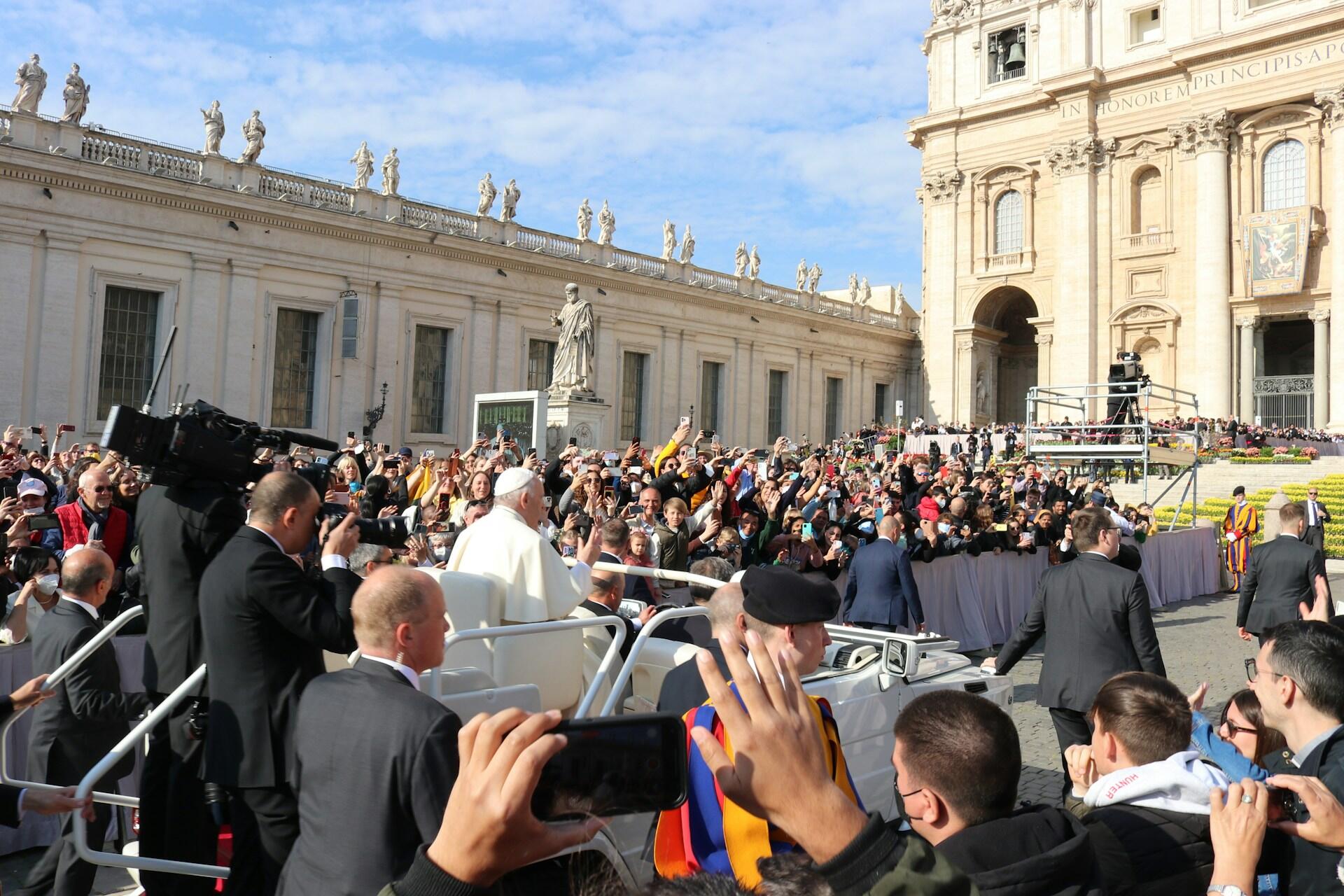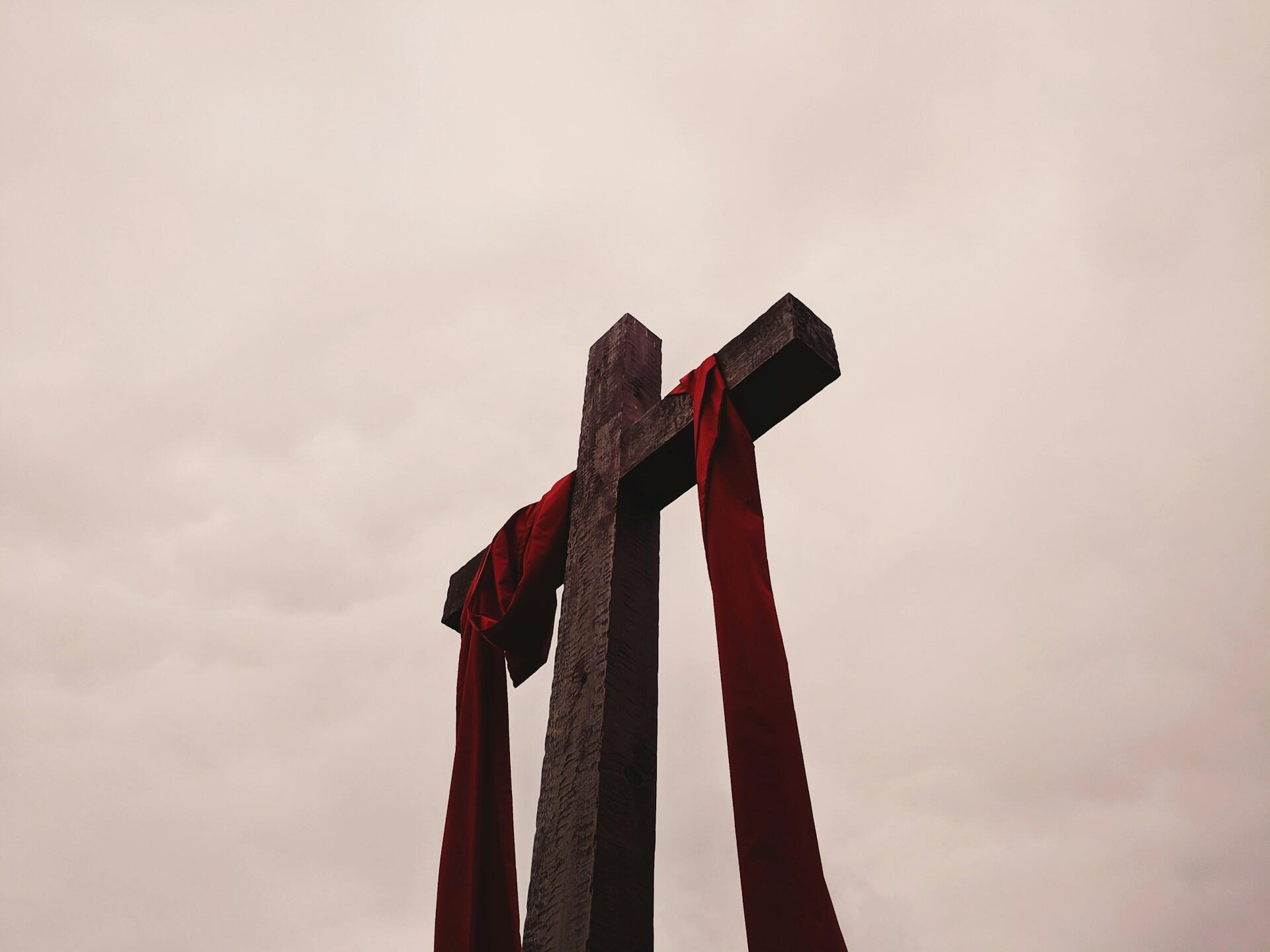The most recent Canadian census revealed that about 53.3% of Canadians identify as Christian. That's a large number (over 19.3 million people) considering that Christianity is currently the largest religion in the world.
Whether our readers are practicing Christians or not, the following article will provide all with a basic understanding of the Christian faith and consider aspects such as where it began 1, how it grew, what the fundamental beliefs are, and some of Christianity's essential figures, symbols, books, and places of worship.
1st–4th Century
Birth of the early church
4th–11th Century
The rise of Christianity in the Roman Empire
11th-15th Century
Decline of medieval Christianity and the Crusades
15th-17th century
Reformation and new denominations
18th-21st century
Modern world Christianity

🚶♂️ Birth of The Early Church (1st–4th Century)
The foundation of Christianity, which sets itself apart from Judaism rests on three major events — the birth, the crucifixion, and the resurrection of Jesus Christ. Before his death, Jesus’s ministry focused mainly on his twelve disciples. After his resurrection, his followers grew in number as they witnessed the miracle of his rising from the dead.
On the day of Pentecost, the Holy Spirit descended upon the disciples, empowering them to speak and preach to the crowds. Those who believed began gathering in the temple courts, breaking bread in their homes, and sharing fellowship with one another (Acts 2). This became the model for the early church.
The word " church" first appears in the Bible in the New Testament, specifically in Matthew 16:18. Here, Jesus tells Peter:
"And I tell you, you are Peter, and on this rock I will build my church, and the gates of Hades will not overcome it." (Matthew 16:18)
The original Greek word (the New Testament was written in Greek) translated as "church" is ekklesia, meaning "called out assembly" or "gathering of people." In this context, Jesus uses it to mark the foundation of a community of believers.
Another turning point which helped spread Christianity during this period is the inclusion of the Gentiles (non Jews) by the Jerusalem Council (Acts 15), where the apostles and elders in the church decided that the Gentiles could convert without following all Jewish laws (like circumcision).
👑 The Rise of Christianity in the Roman Empire (4th–11th Century)
We certainly cannot overlook the influence of the Roman Empire, considering how Christianity spread during the early Middle Ages. Previously, the Roman Empire was associated with pagan practices and a wide worship of many gods. On the other hand, Christianity was a minority religion where its followers were persecuted.
Emperor Constantine was the first Roman emperor to embrace Christianity. As a result, he legalized it through the Edict of Milan in 313 CE , marking the end of persecution against Christians and the beginning of Christianization.
With the new legislation, the Christians are free to publicly worship and rebuild their churches.
Eventually, Nicene Christianity became the official state religion under another emperor, Theodosius I in 380 CE, elevating the influence of the church through the Edict of Thessalonica.

After many years of wars and invasions from Germanic tribes, the Western Roman Empire eventually weakened and ended. Amidst this period of uncertainty, the Church in Rome remained the only stable institution that the people looked to for help and guidance. In other words, the Church's leadership during the Middle Ages became more prominent, especially in these areas:
Politics and social influence
- Negotiation and alliance with European rulers
Education and culture influence
- Roman knowledge, Christian art, and adopting Christian calendars
Spiritual and moral teachings
- Offering of sacraments, spreading of the gospel to new regions
In 800 CE, a strategic Church–state alliance was formed between Pope Leo III and Charlemagne, King of the Franks (in what is now modern-day France), when the Pope crowned Charlemagne as the Holy Roman Emperor. In this partnership, Charlemagne offered protection to the Church, while the Church granted legitimacy for his rule. This relationship allowed Charlemagne to spread Christianity as he expanded his empire across Western and Central Europe.
⛪ Decline of Medieval Christianity and Crusades (11th–15th Century)
Moving into the later part of the Middle Ages, two definitive events changed the course of the history of Christianity. This period was marked by a series of divisions and conflicts between different regions and communities, resulting in the weakening of the Catholic church's dominance across Europe, although Rome remained the central seat of the Pope.

The first event is the Great Schism, which was finalized in 1054 CE, where the Christian community was divided: the Roman Catholic Church (West) and the Eastern Orthodox Church (East). Let's look at their main differences:
| Issue | Roman Catholic Church | Eastern Orthodox Church |
|---|---|---|
| Papal Authority | Pope has supreme authority over entire Church, including Eastern patriarchs | Rejects Pope's universal authority; authority is shared among patriarchs |
| Theology understanding of the Holy Spirit | Holy Spirit comes from the Father and the Son. | Holy Spirit comes from the Father only. |
| Use of Unleavened Bread | Uses unleavened bread for Eucharist | Uses leavened bread for Eucharist |
| Priestly Celibacy | Requires celibacy for priests | Allows married men to become priests (but bishops celibate) |
| Language and Culture | Latin language, Western Roman culture | Greek language, Byzantine culture |
| Political Context | Centered in Rome, Western Europe | Centered in Constantinople, Eastern Roman Empire |
The main reason and trigger point for this division was the disagreement over the authority of the Pope. Even though Pope Leo IX sent a delegate (Cardinal Humbert) to Constantinople to assert papal authority, the discussion ended badly. Eventually, both parties had a mutual excommunication, which officially marked the beginning of The Great Schism — a sign of diminished church unity.
Mutual excommunication, in simple terms, means that both sides officially declared that the other side was cut off from the Church community.
📌Cardinal Humbert, representing the Pope, entered the Hagia Sophia in Constantinople and placed a document on the altar declaring Patriarch Michael Cerularius and his followers cut off from the Church.
📌In response, Cerularius gathered his bishops, rejected the Pope’s authority, and excommunicated Humbert and his group.
Another significant event that happened was the Crusades. During that period, Islam was gaining influence around the Middle East and other parts of Europe. The Roman Catholic Church decided to launch the Crusades (in the name of holy wars) to reclaim Jerusalem and other parts of the Holy Land from Muslim rule. There were about four main stages of the Crusades, and this religious warfare lasted approximately 200 years.
| Impact Area | How the Crusades Affected Christianity |
|---|---|
| Limits of Church Power | Later Crusades failed, showing that the Pope couldn’t fully control military or political outcomes. |
| Shared Christian Identity | United European kingdoms and knights under a common faith, strengthening a sense of Christian community. |
| Papal Authority | Initially boosted the Pope’s prestige, but failures and corruption later weakened moral and political authority. |
| Cultural & Knowledge Influence | Exposure to Middle Eastern ideas, trade, and technology influenced European culture and education. |
| East-West Division | Fourth Crusade’s sack of Constantinople worsened the divide between Orthodox and Catholic churches. |

🔥 Reformation and New Denominations (15th–17th Century)
Next, we’ll discuss a movement that changed the course of Christian history and changed how Christianity was spread — the Reformation. During the 1500s, the Catholic Church faced many criticisms, particularly for their support of selling indulgences (turning a spiritual practice into a financial transaction), and also massive corruption among the clergy.
This led Martin Luther, a German monk, to nail his 95 Theses to the door of Wittenberg Castle Church, and affirm that salvation is by faith alone (sola fide), which sparked the movement of the Reformation in Europe.
Under the Reformation movement, new denominations emerged and continued to evolve according to different theological reforms, which subsequently challenged the authority of the Pope and the Catholic Church in Rome:
Lutheranism
Based on Luther's teachings
Calvinism
Based on John Calvin's teachings
Anglicanism
Took place during Henry VIII's reign when he broke from Rome
One of the reasons why these new denominations experienced a huge growth, which expanded to many countries, is due to the translation and printing of the Bible into local languages instead of Latin. It made the Bible more accessible to the general public. In other words, Christianity was spread faster and further!
Johannes Gutenberg came out with a new printing technology, which allowed the Bible to be copied quickly and cheaply, fueling circulation and the Reformation movement.
While many people left the Catholic Church during the peak of the Reformation, the Catholic Church responded with the Council of Trent, introducing its own reforms to maintain relevance and address issues such as corruption and non-biblical practices (like the selling of indulgences).
Also known as the Counter-Reformation, this series of reforms aimed to strengthen the identity of the Catholic Church through worldwide missionary work (such as the Jesuits) and through art, music, and culture (such as the patronage of artists). In a way, this movement also helped to spread and shape Catholicism into what we know today.
🌐Modern World Christianity (18th–21st Century)
Finally, let's talk about two important events that shaped modern-day Christianity from the Protestant point of view and the Catholic point of view.

For the Protestants, the 18th century was the beginning of the Methodist Revival, led by John Wesley, an ordained Anglican priest in the United Kingdom.
The Methodist Revival went on to inspire other new movements from the 19th to 20th century, like the Holiness Movement, Pentecostal Movement, and also Charismatic Movements, spreading from the UK to even America.
On the other hand, the Second Vatican Council Reforms (Vatican II) in the Catholic Church took place during the 20th century (around the 60s). The implementation of Vatican II was a key catalyst for modernizing Catholicism among its massive believers 2 across the globe.
Vatican’s Central Office for Church Statistics
Let's look at the overview and impacts of these two events among the Protestant and Catholic communities.
Methodist Revival
Second Vatican Council Reforms
✝️ Basic Beliefs of Christianity
Like any religion, Christianity has many beliefs that have been passed down through centuries and remain the same today. There are many beliefs, doctrines, and dogmas that make the Christian faith unique from other world religions, such as Islam, Buddhism, or Hinduism.
The Son of God became a man to enable men to become sons of God.
C.S.Lewis
While many denominations of Christianity vary in some ways, the following are some of its most characteristic beliefs practiced by both Catholics and Protestants:
- Bible: The Bible should be read and analysed since it is the inspired, infallible, and authoritative written word of God. Where did the Bible come from? The Holy Bible was not written by God personally using a pen and paper, but He inspired over 40 different men to write the words under the guidance of the Holy Spirit.
- Jesus Christ: Jesus is the son of God, and his teachings, birth, miracles, bodily resurrection, reign in heaven, and atoning death are written in the Bible for the benefit of those who strive to imitate Jesus' perfect example. Also, the only means of being cleansed from sin is through repentance and faith in the precious blood of Christ.
- Water Baptism: All denominations of Christianity believe in water baptism. Catholics have their children baptized to welcome them to the Catholic church and to be cleansed from the original sin with which they were born. Protestants choose to be baptized as a personal commitment to rededicate their lives to Jesus Christ.
- Trinity: A primary doctrine taught by Christians is the Trinity. The Trinity is the belief that the one God comprises three distinct co-existing persons: the Father, the Son, and the Holy Spirit.
The previously mentioned beliefs are only a few Christian doctrines that are practiced by the majority of followers. It is essential to state that certain denominations, such as the Mormon Church or Jehovah's Witnesses, do not recognize doctrines such as Saints or the Trinity.
📖Prominent Figures, Symbols, Holy Books & Places of Worship
Since Christianity is the world's most practiced religion, some distinct symbols and traditions may be unique to specific geographic locations. However, public figures, holy books, and places of worship are practically identical from one place to the next.
For instance, the most familiar and widely recognized symbol of Christianity is, without a doubt, the wooden cross 3.

Many historians believe it was the shape and structure upon which Jesus Christ died, although the Bible never mentions any reference to the cross, and the Greek word from which it is translated means post or torture stake.
The Roman Catholic depictions of the cross reveal the body of Christ still on the symbol.
In terms of the holy Book, it is none other than the Bible. The Bible is divided into two main sections: the Old Testament and the New Testament. Both parts are divided into individual books such as Genesis, Ruth, Proverbs, Psalms, Jeremiah, Matthew, Acts, Hebrews, and Revelation, to name only a few. The books are divided into chapters and verses. The Bible covers various topics such as the creation of the world, the first sin, God's dealings with the Israelites, prophecies about the coming Messiah, and the beautiful teachings of Jesus.
Now, let's review some important public figures and places of worship of Christianity:
| Tradition | Public Figures | Places of Worship | Famous Figure |
|---|---|---|---|
| Roman Catholic | Pope, Priests, Nuns | Churches, Cathedrals | Pope Francis |
| Eastern Orthodox | Patriarchs, Priests, Monks | Churches, Monasteries | Patriarch Bartholomew I |
| Protestant (general) | Pastors, Ministers, Elders | Churches, Chapels | Martin Luther |
| Anglican / Episcopal | Archbishop, Priests, Bishops | Cathedrals, Parish churches | Archbishop of Canterbury (Justin Welby) |
| Methodist | Ministers, Lay leaders | Chapels, Churches | John Wesley |
| Pentecostal / Charismatic | Pastors, Evangelists | Worship halls, Megachurches | William J. Seymour |
| Lutheran | Pastors, Bishops (some) | Churches, Cathedrals | Martin Luther |
| Evangelical (non-denominational) | Pastors, Worship leaders | Churches, Community centers | Billy Graham |
We hope this article has offered you the answer to how Christianity spread over the years. Acquiring more knowledge about world religions is an enriching experience that allows for more tolerance and a better understanding of the people around us. Dive deep into different religions with an experienced history tutor at Superprof today!
References
- Chadwick, Henry, Lindberg, H, C., Wainwright, Geoffrey, Sullivan, E, L., Benz, Wilhelm, E., Pelikan, Jan, J., Spencer, Sidney, McGinn, J, B., Hick, John, Marty, . . . Matt. (2025, September 24). Christianity | Definition, Origin, History, Beliefs, Symbols, Types, & Facts. Encyclopedia Britannica. https://www.britannica.com/topic/Christianity/The-history-of-Christianity
- Vatican News. (2025, March 20). New Church statistics reveal growing Catholic population, fewer pastoral workers. Vatican News. https://www.vaticannews.va/en/vatican-city/news/2025-03/pontifical-yearbook-2025-priests-religious-statistics.html
- BBC - Religions - Christianity: The basics of Christian beliefs. (n.d.). https://www.bbc.co.uk/religion/religions/christianity/beliefs/basics_1.shtml















